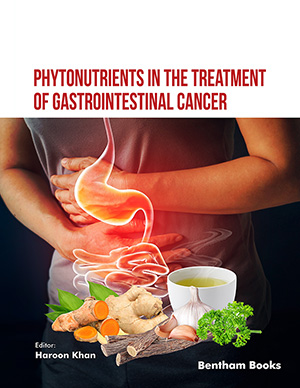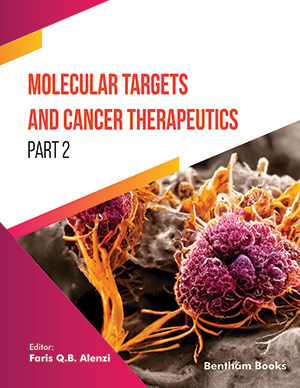[1]
Jemal A, Bray F, Center MM, Ferlay J, Ward E, Forman D. Global cancer statistics. CA Cancer J Clin 2011; 61(2): 69-90.
[2]
Andersen MH, Schrama D, Thor Straten P, Becker JC. Cytotoxic T cells. J Invest Dermatol 2006; 126(1): 32-41.
[3]
Vogelstein B, Ed. The sequence of all 185,000 coding exons in each of 100 human tumors: What has it taught us. Proceedings of the 101st Annual Meeting of the American Association for Cancer Research. Washington. 2010.
[4]
Matsushita H, Vesely MD, Koboldt DC, Rickert CG, Uppaluri R, Magrini VJ. Cancer exome analysis reveals a T-cell-dependent mechanism of cancer immunoediting. Nature 2012; 482(7385): 400-4.
[5]
Mellman I, Coukos G, Dranoff G. Cancer immunotherapy comes of age. Nature 2011; 480(7378): 480-9.
[6]
Boudreau JE, Bonehill A, Thielemans K, Wan Y. Engineering dendritic cells to enhance cancer immunotherapy. Mol Ther 2011; 19(5): 841-53.
[7]
Ribas A. Tumor immunotherapy directed at PD-1. N Engl J Med 2012; 366(26): 2517-9.
[8]
Smalley KS. Understanding melanoma signaling networks as the basis for molecular targeted therapy. J Invest Dermatol 2010; 130(1): 28-37.
[9]
Sekulic A, Haluska P Jr, Miller AJ, De Lamo GJ, Ejadi S, Pulido JS. Malignant melanoma in the 21st century: the emerging molecular landscape. Mayo Clin Proc 2008; 83(7): 825-46.
[10]
Fecher LA, Amaravadi RK, Flaherty KT. The MAPK pathway in melanoma. Curr Opin Oncol 2008; 20(2): 183-9.
[11]
McKenzie HA, Fung C, Becker TM, Irvine M, Mann GJ, Kefford RF. Predicting functional significance of cancer-associated p16 (INK4a) mutations in CDKN2A. Hum Mutat 2010; 31(6): 692-701.
[12]
Dankort D, Curley DP, Cartlidge RA, Nelson B, Karnezis AN, Damsky WE Jr. Braf(V600E) cooperates with Pten loss to induce metastatic melanoma. Nat Genet 2009; 41(5): 544-52.
[13]
Yu H, McDaid R, Lee J, Possik P, Li L, Kumar SM. The role of BRAF mutation and p53 inactivation during transformation of a subpopulation of primary human melanocytes. Am J Pathol 2009; 174(6): 2367-77.
[14]
Davies H, Bignell GR, Cox C, Stephens P, Edkins S, Clegg S, et al. Mutations of the BRAF gene in human cancer. Nature 2002; 417(6892): 949-54.
[15]
Gray-Schopfer V, Wellbrock C, Marais R. Melanoma biology and new targeted therapy. Nature 2007; 445(7130): 851-7.
[16]
Ball NJ, Yohn JJ, Morelli JG, Norris DA, Golitz LE, Hoeffler JP. Ras mutations in human melanoma: a marker of malignant progression. J Invest Dermatol 1994; 102(3): 285-90.
[17]
Stahl JM, Cheung M, Sharma A, Trivedi NR, Shanmugam S, Robertson GP. Loss of PTEN promotes tumor development in malignant melanoma. Cancer Res 2003; 63(11): 2881-90.
[18]
Atkins MB, Kunkel L, Sznol M, Rosenberg SA. High-dose recombinant interleukin-2 therapy in patients with metastatic melanoma: long-term survival update. Cancer J Sci Am 2000; 6(Suppl. 1): S11-4.
[19]
Phan GQ, Attia P, Steinberg SM, White DE, Rosenberg SA. Factors associated with response to high-dose interleukin-2 in patients with metastatic melanoma. J Clin Oncol 2001; 19(15): 3477-82.
[20]
White RL Jr, Schwartzentruber DJ, Guleria A, MacFarlane MP, White DE, Tucker E. Cardiopulmonary toxicity of treatment with high dose interleukin-2 in 199 consecutive patients with metastatic melanoma or renal cell carcinoma. Cancer 1994; 74(12): 3212-22.
[21]
MacFarlane MP, Yang JC, Guleria AS, White RL Jr, Seipp CA, Einhorn JH. The hematologic toxicity of interleukin-2 in patients with metastatic melanoma and renal cell carcinoma. Cancer 1995; 75(4): 1030-7.
[22]
Schwartzentruber D, Lawson D, Richards J, Conry R, Miller D, Triesman J. A phase III multi-institutional randomized study of immunization with the gp100: 209-217 (210M) peptide followed by high-dose IL-2 compared with high-dose IL-2 alone in patients with metastatic melanoma. J Clin Oncol 2009; 27(18)(Suppl.).
[23]
Hodi FS, O’Day SJ, McDermott DF, Weber RW, Sosman JA, Haanen JB. Improved survival with ipilimumab in patients with metastatic melanoma. N Engl J Med 2010; 363(8): 711-23.
[24]
Robert C, Thomas L, Bondarenko I, O’Day S. M DJ, Garbe C. Ipilimumab plus dacarbazine for previously untreated metastatic melanoma. N Engl J Med 2011; 364(26): 2517-26.
[25]
Ibrahim R, Berman D, DePril V, Humphrey R, Chen T, Messina M. editors. Ipilimumab safety profile: Summary of findings from
completed trials in advanced melanoma. Journal of Clinical Oncology;
2011: Amer Soc Clinical Oncology 2318 Mill Road, Ste 800,
Alexandria, VA 22314 USA.
[26]
Weber JS, Dummer R, de Pril V, Lebbe C, Hodi FS. Patterns of onset and resolution of immune-related adverse events of special interest with ipilimumab: detailed safety analysis from a phase 3 trial in patients with advanced melanoma. Cancer 119(9): 1675-82.
[27]
Weber JS, Kahler KC, Hauschild A. Management of immune-related adverse events and kinetics of response with ipilimumab. J Clin Oncol 2012; 30(21): 2691-7.
[28]
Wolchok JD, Neyns B, Linette G, Negrier S, Lutzky J, Thomas L. Ipilimumab monotherapy in patients with pretreated advanced melanoma: a randomised, double-blind, multicentre, phase 2, dose-ranging study. Lancet Oncol 2010; 11(2): 155-64.
[29]
Schadendorf D, Hodi F, Robert C, Weber J, Margolin K, Hamid O. Pooled analysis of long-term survival data from phase II and phase III
trials of ipilimumab in metastatic or locally advanced, unresectable melanomaEur J Cancer 2013;49(2):24LBA
[30]
Prieto PA, Yang JC, Sherry RM, Hughes MS, Kammula US, White DE. CTLA-4 blockade with ipilimumab: long-term follow-up of 177 patients with metastatic melanoma. Clin Cancer Res 2012; 18(7): 2039-47.
[31]
Lebbé C, McDermott D, Robert C, Lorigan P, Ottensmeier C, Wolchok J, Eds. Ipilimumab improves survival in previously treated, advanced melanoma
patients with poor prognostic factors: subgroup analyses from a phase III trialAnnals of Oncology;
2010: Oxford Univ Press Great Clarendon St, Oxford OX2 6DP,
ENGLAND.
[32]
Hamid O, Robert C, Daud A, Hodi FS, Hwu WJ, Kefford R. Safety and tumor responses with lambrolizumab (anti-PD-1) in melanoma. N Engl J Med 2013; 369(2): 134-44.
[33]
Ribas A, Hodi FS, Kefford R, Hamid O, Daud A, Wolchok JD. Efficacy and safety of the anti-PD-1 monoclonal antibody MK-
3475 in 411 patients (pts) with melanoma (MEL). ASCO Meeting
Abstracts. 2014;32(18_suppl):LBA9000.
[34]
Hodi FS, Sznol M, Kluger HM, McDermott DF, Carvajal RD, Lawrence DP. editors. Long-term survival of ipilimumab-naive patients
(pts) with advanced melanoma (MEL) treated with nivolumab
(anti-PD-1, BMS-936558, ONO-4538) in a phase I trial.
ASCO Annual Meeting Proceedings; 2014.
[35]
Topalian SL, Sznol M, McDermott DF, Kluger HM, Carvajal RD, Sharfman WH. Survival, durable tumor remission, and long-term safety in patients with advanced melanoma receiving nivolumab. J Clin Oncol 2014; 32(10): 1020-30.
[36]
Atkins MB, Kudchadkar RR, Sznol M, McDermott DF, Lotem M, Schachter J. Phase 2, multicenter, safety and efficacy study of
pidilizumab in patients with metastatic melanoma. ASCO Meeting
Abstracts. 2014;32(15_suppl):9001.
[37]
Topalian SL, Drake CG, Pardoll DM. Targeting the PD-1/B7-H1(PD-L1) pathway to activate anti-tumor immunity. Curr Opin Immunol 2012; 24(2): 207-12.
[38]
Lutzky J, Antonia SJ, Blake-Haskins A, Li X, Robbins PB, Shalabi AM. A phase 1 study of MEDI4736, an anti-PD-L1 antibody, in patients with advanced solid tumors.ASCO Meeting Abstracts.
2014;32(15_suppl):3001.
[39]
Segal NH, Antonia SJ, Brahmer JR, Maio M, Blake-Haskins A, Li X. Preliminary data from a multi-arm expansion study of MEDI4736, an anti-PD-L1 antibody.ASCO Meeting Abstracts.
2014;32(15_suppl):3002.
[40]
Sznol MKH, Callahan MK, Postow MA, et al. editor Survival,
response duration, and activity by BRAF mutation (MT) status of
nivolumab (NIVO, anti-PD-1, BMS-936558, ONO-4538) and
ipilimumab (IPI) concurrent therapy in advanced melanoma
(MEL). ASCO Annual Meeting; 2014; Chicago,IL: J Clin Oncol
32:5s, 2014 (suppl; abstr LBA9003^).
[41]
Wolchok JD, Kluger H, Callahan MK, Postow MA, Rizvi NA, Lesokhin AM. Nivolumab plus ipilimumab in advanced melanoma. N Engl J Med 2013; 369(2): 122-33.
[42]
Bartlett DL, Liu Z, Sathaiah M, Ravindranathan R, Guo Z, He Y. Oncolytic viruses as therapeutic cancer vaccines. Mol Cancer 2013; 12(1): 103.
[43]
Kaufman HL, Andtbacka RHI, Collichio FA, Amatruda T, Senzer NN, Chesney J. Primary overall survival (OS) from OPTiM, a randomized
phase III trial of talimogene laherparepvec (T-VEC) versus
subcutaneous (SC) granulocyte-macrophage colony-stimulating
factor (GM-CSF) for the treatment (tx) of unresected stage IIIB/C
and IV melanoma. ASCO Meeting Abstracts. 2014; 32(15_suppl):
9008a.
[44]
Puzanov I, Milhem MM, Andtbacka RHI, Minor DR, Hamid O, Li A. Primary analysis of a phase 1b multicenter trial to evaluate
safety and efficacy of talimogene laherparepvec (T-VEC) and
ipilimumab (ipi) in previously untreated, unresected stage IIIB-IV
melanoma. ASCO Meeting Abstracts. 2014;32(15_suppl):9029.
[45]
Phan GQ, Rosenberg SA. Adoptive cell transfer for patients with metastatic melanoma: the potential and promise of cancer immunotherapy. Cancer Contr 2013; 20(4): 289-97.
[46]
Hauschild A, Agarwala SS, Trefzer U, Hogg D, Robert C, Hersey P. Results of a phase III, randomized, placebo-controlled study of sorafenib in combination with carboplatin and paclitaxel as second-line treatment in patients with unresectable stage III or stage IV melanoma. J Clin Oncol 2009; 27(17): 2823-30.
[47]
Eisen T, Ahmad T, Flaherty KT, Gore M, Kaye S, Marais R. Sorafenib in advanced melanoma: a Phase II randomised discontinuation trial analysis. Br J Cancer 2006; 95(5): 581-6.
[48]
Joseph EW, Pratilas CA, Poulikakos PI, Tadi M, Wang W, Taylor BS. The RAF inhibitor PLX4032 inhibits ERK signaling and tumor cell proliferation in a V600E BRAF-selective manner. Proc Natl Acad Sci USA 2010; 107(33): 14903-8.
[49]
Flaherty KT, Puzanov I, Kim KB, Ribas A, McArthur GA, Sosman JA. Inhibition of mutated, activated BRAF in metastatic melanoma. N Engl J Med 2010; 363(9): 809-19.
[50]
Sosman JA, Kim KB, Schuchter L, Gonzalez R, Pavlick AC, Weber JS. Survival in BRAF V600-mutant advanced melanoma treated with vemurafenib. N Engl J Med 2012; 366(8): 707-14.
[51]
Ribas A, Kim KB, Schuchter LM, Gonzalez R, Pavlick AC, Weber JS. BRIM-2: An open-label, multicenter phase II study of vemurafenib
in previously treated patients with BRAF V600E mutationpositive
metastatic melanoma. ASCO Meeting Abstracts. 2011; 29
(15_suppl):8509.
[52]
Chapman PB, Hauschild A, Robert C, Haanen JB, Ascierto P, Larkin J. Improved survival with vemurafenib in melanoma with BRAF V600E mutation. N Engl J Med 2011; 364(26): 2507-16.
[53]
Chapman PB, Hauschild A, Robert C, Larkin JMG, Haanen JBAG, Ribas A. Updated overall survival (OS) results for BRIM-3, a
phase III randomized, open-label, multicenter trial comparing
BRAF inhibitor vemurafenib (vem) with dacarbazine (DTIC) in
previously untreated patients with BRAFV600E-mutated melanoma.
ASCO Meeting Abstracts. 2012;30(15_suppl):8502.
[54]
Oberholzer PA, Kee D, Dziunycz P, Sucker A, Kamsukom N, Jones R. RAS mutations are associated with the development of cutaneous squamous cell tumors in patients treated with RAF inhibitors. J Clin Oncol 2012; 30(3): 316-21.
[55]
McArthur GA, Chapman PB, Robert C, Larkin J, Haanen JB, Dummer R. Safety and efficacy of vemurafenib in BRAF(V600E) and BRAF(V600K) mutation-positive melanoma (BRIM-3): extended follow-up of a phase 3, randomised, open-label study. Lancet Oncol 2014; 15(3): 323-32.
[56]
Larkin J, Del Vecchio M, Ascierto PA, Krajsova I, Schachter J, Neyns B. Vemurafenib in patients with BRAF(V600) mutated metastatic melanoma: an open-label, multicentre, safety study. Lancet Oncol 2014; 15(4): 436-44.
[57]
Ascierto PA, Minor D, Ribas A, Lebbe C, O’Hagan A, Arya N. Phase II trial (BREAK-2) of the BRAF inhibitor dabrafenib (GSK2118436) in patients with metastatic melanoma. J Clin Oncol 2013; 31(26): 3205-11.
[58]
Hauschild A, Grob JJ, Demidov LV, Jouary T, Gutzmer R, Millward M. Dabrafenib in BRAF-mutated metastatic melanoma: a multicentre, open-label, phase 3 randomised controlled trial. Lancet 2012; 380(9839): 358-65.
[59]
Hauschild A, Grob JJ, Demidov LV, Jouary T, Gutzmer R, Millward M. An update on BREAK-3, a phase III, randomized trial:
Dabrafenib (DAB) versus dacarbazine (DTIC) in patients with
BRAF V600E-positive mutation metastatic melanoma (MM).
ASCO Meeting Abstracts. 2013;31(15_suppl):9013
[60]
Falchook GS, Lewis KD, Infante JR, Gordon MS, Vogelzang NJ, DeMarini DJ. Activity of the oral MEK inhibitor trametinib in patients with advanced melanoma: a phase 1 dose-escalation trial. Lancet Oncol 2012; 13(8): 782-9.
[61]
Flaherty KT, Robert C, Hersey P, Nathan P, Garbe C, Milhem M. Improved survival with MEK inhibition in BRAF-mutated melanoma. N Engl J Med 2012; 367(2): 107-14.
[62]
Poulikakos PI, Persaud Y, Janakiraman M, Kong X, Ng C, Moriceau G. RAF inhibitor resistance is mediated by dimerization of aberrantly spliced BRAF(V600E). Nature 2011; 480(7377): 387-90.
[63]
Wagle N, Emery C, Berger MF, Davis MJ, Sawyer A, Pochanard P. Dissecting therapeutic resistance to RAF inhibition in melanoma by tumor genomic profiling. J Clin Oncol 2011; 29(22): 3085-96.
[64]
Infante JR, Falchook GS, Lawrence DP, Weber JS, Kefford RF, Bendell JC. Phase I/II study to assess safety, pharmacokinetics, and
efficacy of the oral MEK 1/2 inhibitor GSK1120212 (GSK212)
dosed in combination with the oral BRAF inhibitor GSK2118436
(GSK436). ASCO Meeting Abstracts. 2011; 29(18_suppl):
CRA8503.
[65]
Flaherty KT, Infante JR, Daud A, Gonzalez R, Kefford RF, Sosman J. Combined BRAF and MEK inhibition in melanoma with BRAF V600 mutations. N Engl J Med 2012; 367(18): 1694-703.
[66]
Ribas A, Gonzalez R, Pavlick A, Hamid O, Gajewski TF, Daud A. Combination of vemurafenib and cobimetinib in patients with advanced BRAF(V600)-mutated melanoma: a phase 1b study. Lancet Oncol 2014; 15(9): 954-65.
[67]
Queirolo P, Spagnolo F, Altomonte M, Chiarion-Sileni V, Pigozzo J, Del Vecchio M. Italian cohort of ipilimumab expanded access
programme (EAP): Efficacy, safety, and correlation with mutation
status in metastatic melanoma patients. ASCO Meeting Abstracts.
2013;31(15_suppl):9070.
[68]
Shahabi V, Whitney G, Hamid O, Schmidt H, Chasalow SD, Alaparthy S. Assessment of association between BRAF-V600E mutation status in melanomas and clinical response to ipilimumab. Cancer Immunol Immunother 2012; 61(5): 733-7.
[69]
Ascierto PA, Simeone E, Giannarelli D, Grimaldi AM, Romano A, Mozzillo N. Sequencing of BRAF inhibitors and ipilimumab in patients with metastatic melanoma: a possible algorithm for clinical use. J Transl Med 2012; 10: 107.
[70]
Ackerman A, McDermott DF, Lawrence DP, Gunturi A, Flaherty KT, Giobbie-Hurder A. Outcomes of patients with malignant melanoma treated with immunotherapy prior to or after vemurafenib.ASCO Meeting Abstracts. 2012;30(15_suppl):8569.
[71]
Ascierto PA, Simeone E, Chiarion-Sileni V, Queirolo P, Del Vecchio M, Di Guardo L. Sequential treatment with ipilimumab and
BRAF inhibitors in patients with metastatic melanoma: Data from
the Italian cohort of ipilimumab expanded access programme
(EAP). ASCO Meeting Abstracts. 2013;31(15_suppl):9035.
[72]
Hu-Lieskovan S, Robert L, Homet Moreno B, Ribas A. Combining Targeted Therapy With Immunotherapy in BRAF-Mutant Melanoma: Promise and Challenges. J Clin Oncol 2014; 21: 2248-54.
[73]
Ribas A, Hodi FS, Callahan M, Konto C, Wolchok J. Hepatotoxicity with combination of vemurafenib and ipilimumab. N Engl J Med 2013; 368(14): 1365-6.
[74]
Knight DA, Ngiow SF, Li M, Parmenter T, Mok S, Cass A. Host immunity contributes to the anti-melanoma activity of BRAF inhibitors. J Clin Invest 2013; 123(3): 1371-81.
[75]
Reiman JM, Kmieciak M, Manjili MH, Knutson KL. Tumor immunoediting and immunosculpting pathways to cancer progression. Semin Cancer Biol 2007; 17(4): 275-87.
[76]
Robert C, Schadendorf D, Messina M, Hodi FS, O’Day S. Efficacy and safety of retreatment with ipilimumab in patients with pretreated advanced melanoma who progressed after initially achieving disease control. Clin Cancer Res 2013; 19(8): 2232-9.
[77]
Robert C, Ribas A, Wolchok JD, Hodi FS, Hamid O, Kefford R. Anti-programmed-death-receptor-1 treatment with pembrolizumab in ipilimumab-refractory advanced melanoma: a randomised dose-comparison cohort of a phase 1 trial. Lancet 2014; 384(9948): 1109-17.
[78]
Wolchok JD, Hoos A, O’Day S, Weber JS, Hamid O, Lebbe C. Guidelines for the evaluation of immune therapy activity in solid tumors: immune-related response criteria. Clin Cancer Res 2009; 15(23): 7412-20.
[79]
Hodi FS, Ribas A, Daud A, Hamid O, Robert C, Kefford R. Evaluation of immune-related response criteria (irRC) in patients
(pts) with advanced melanoma (MEL) treated with the anti-PD-1
monoclonal antibody MK-3475. ASCO Meeting Abstracts. 2014;
32(15_suppl):3006.
[80]
Kefford R, Ribas A, Hamid O, Robert C, Daud A, Wolchok JD. Clinical efficacy and correlation with tumor PD-L1 expression in
patients (pts) with melanoma (MEL) treated with the anti-PD-1
monoclonal antibody MK-3475. ASCO Meeting Abstracts. 2014;
32(15_suppl):3005.
[81]
Snyder Charen A, Makarov V, Merghoub T, Walsh L, Yuan J, Miller M. The neoantigen landscape underlying clinical response to ipilimumab.ASCO Meeting Abstracts. 2014;32(15_suppl):3003.
[82]
Adaniel C, Rendleman J, Polsky D, Berman RS, Shapiro RL, Shao Y. Germline genetic determinants of immunotherapy response in metastatic melanoma.ASCO Meeting Abstracts. 2014; 32
(15_suppl):3004.
[83]
Parkinson DR, Abrams JS, Wiernik PH, Rayner AA, Margolin KA, Van Echo DA. Interleukin-2 therapy in patients with metastatic malignant melanoma: a phase II study. J Clin Oncol 1990; 8(10): 1650-6.
[84]
Margolin K, Ernstoff MS, Hamid O, Lawrence D, McDermott D, Puzanov I. Ipilimumab in patients with melanoma and brain metastases: an open-label, phase 2 trial. Lancet Oncol 13(5): 459-65.
[85]
Long GV, Trefzer U, Davies MA, Kefford RF, Ascierto PA, Chapman PB. Dabrafenib in patients with Val600Glu or Val600Lys BRAF-mutant melanoma metastatic to the brain (BREAK-MB): a multicentre, open-label, phase 2 trial. Lancet Oncol 2012; 13(11): 1087-95.
[86]
Postow MA, Callahan MK, Barker CA, Yamada Y, Yuan J, Kitano S. Immunologic correlates of the abscopal effect in a patient with melanoma. N Engl J Med 2012; 366(10): 925-31.
[87]
Stamell EF, Wolchok JD, Gnjatic S, Lee NY, Brownell I. The abscopal effect associated with a systemic anti-melanoma immune response. Int J Radiat Oncol Biol Phys 2013; 85(2): 293-5.
[88]
Grimaldi AM, Simeone E, Giannarelli D, Muto P, Falivene S, Borzillo V. Abscopal effects of radiotherapy on advanced melanoma patients who progressed after ipilimumab immunotherapy. OncoImmunology 2014; 3: e28780.
[89]
Lui P, Cashin R, Machado M, Hemels M, Corey-Lisle PK, Einarson TR. Treatments for metastatic melanoma: synthesis of evidence from randomized trials. Cancer Treat Rev 2007; 33(8): 665-80.
[90]
Middleton MR, Grob JJ, Aaronson N, Fierlbeck G, Tilgen W, Seiter S. Randomized phase III study of temozolomide versus dacarbazine in the treatment of patients with advanced metastatic malignant melanoma. J Clin Oncol 2000; 18(1): 158-66.
[91]
Avril MF, Aamdal S, Grob JJ, Hauschild A, Mohr P, Bonerandi JJ. Fotemustine compared with dacarbazine in patients with disseminated malignant melanoma: a phase III study. J Clin Oncol 2004; 22(6): 1118-25.
[92]
Bedikian AY, Millward M, Pehamberger H, Conry R, Gore M, Trefzer U. Bcl-2 antisense (oblimersen sodium) plus dacarbazine in patients with advanced melanoma: the Oblimersen Melanoma Study Group. J Clin Oncol 2006; 24(29): 4738-45.
[93]
Hill GJ II, Krementz ET, Hill HZ. Dimethyl triazeno imidazole carboxamide and combination therapy for melanoma. IV. Late results after complete response to chemotherapy (Central Oncology Group protocols 7130, 7131, and 7131A). Cancer 1984; 53(6): 1299-305.
[94]
Bottoni U, Bonaccorsi P, Devirgiliis V, Panasiti V, Borroni RG, Trasimeni G. Complete remission of brain metastases in three patients with stage IV melanoma treated with BOLD and G-CSF. Jpn J Clin Oncol 2005; 35(9): 507-13.
[95]
Seigler HF, Lucas VS Jr, Pickett NJ, Huang AT. DTIC, CCNU, bleomycin and vincristine (BOLD) in metastatic melanoma. Cancer 1980; 46(11): 2346-8.
[96]
Legha SS, Ring S, Papadopoulos N, Plager C, Chawla S, Benjamin R. A prospective evaluation of a triple-drug regimen containing cisplatin, vinblastine, and dacarbazine (CVD) for metastatic melanoma. Cancer 1989; 64(10): 2024-9.
[97]
Saba HI, Cruse CW, Wells KE, Klein CJ, Reintgen DS. Treatment of stage IV malignant melanoma with dacarbazine, carmustine, cisplatin, and tamoxifen regimens: a University of South Florida and H. Lee Moffitt Melanoma Center Study. Ann Plast Surg 1992; 28(1): 65-9.
[98]
Lattanzi SC, Tosteson T, Chertoff J, Maurer LH, O’Donnell J, LeMarbre PJ. Dacarbazine, cisplatin and carmustine, with or without tamoxifen, for metastatic melanoma: 5-year follow-up. Melanoma Res 1995; 5(5): 365-9.
[99]
Chapman PB, Einhorn LH, Meyers ML, Saxman S, Destro AN, Panageas KS. Phase III multicenter randomized trial of the Dartmouth regimen versus dacarbazine in patients with metastatic melanoma. J Clin Oncol 1999; 17(9): 2745-51.
[100]
Sasse AD, Sasse EC, Clark LG, Ulloa L, Clark OA. Chemoimmunotherapy versus chemotherapy for metastatic malignant melanoma. Cochrane Database Syst Rev 2007; (1): Cd005413.
[101]
Cocconi G, Bella M, Calabresi F, Tonato M, Canaletti R, Boni C. Treatment of metastatic malignant melanoma with dacarbazine plus tamoxifen. N Engl J Med 1992; 327(8): 516-23.
[102]
Rusthoven JJ, Quirt IC, Iscoe NA, McCulloch PB, James KW, Lohmann RC. Randomized, double-blind, placebo-controlled trial comparing the response rates of carmustine, dacarbazine, and cisplatin with and without tamoxifen in patients with metastatic melanoma. National Cancer Institute of Canada Clinical Trials Group. J Clin Oncol 1996; 14(7): 2083-90.
[103]
Creagan ET, Suman VJ, Dalton RJ, Pitot HC, Long HJ, Veeder MH. Phase III clinical trial of the combination of cisplatin, dacarbazine, and carmustine with or without tamoxifen in patients with advanced malignant melanoma. J Clin Oncol 1999; 17(6): 1884-90.
[104]
Beguerie JR, Xingzhong J, Valdez RP. Tamoxifen vs. non-tamoxifen treatment for advanced melanoma: a meta-analysis. Int J Dermatol 2010; 49(10): 1194-202.
[105]
Quirt I, Verma S, Petrella T, Bak K, Charette M. Temozolomide for the treatment of metastatic melanoma: a systematic review. Oncologist 2007; 12(9): 1114-23.
[106]
Kaufmann R, Spieth K, Leiter U, Mauch C, von den Driesch P, Vogt T. Temozolomide in combination with interferon-alfa versus temozolomide alone in patients with advanced metastatic melanoma: a randomized, phase III, multicenter study from the Dermatologic Cooperative Oncology Group. J Clin Oncol 2005; 23(35): 9001-7.
[107]
Agarwala SS, Kirkwood JM, Gore M, Dreno B, Thatcher N, Czarnetski B. Temozolomide for the treatment of brain metastases associated with metastatic melanoma: a phase II study. J Clin Oncol 2004; 22(11): 2101-7.
[108]
Hofmann M, Kiecker F, Wurm R, Schlenger L, Budach V, Sterry W. Temozolomide with or without radiotherapy in melanoma with unresectable brain metastases. J Neurooncol 2006; 76(1): 59-64.
[109]
Nathan FE, Berd D, Sato T, Mastrangelo MJ. Paclitaxel and tamoxifen: An active regimen for patients with metastatic melanoma. Cancer 2000; 88(1): 79-87.
[110]
Zimpfer-Rechner C, Hofmann U, Figl R, Becker JC, Trefzer U, Keller I. Randomized phase II study of weekly paclitaxel versus paclitaxel and carboplatin as second-line therapy in disseminated melanoma: a multicentre trial of the Dermatologic Co-operative Oncology Group (DeCOG). Melanoma Res 2003; 13(5): 531-6.
[111]
Flaherty KT, Lee SJ, Zhao F, Schuchter LM, Flaherty L, Kefford R. Phase III trial of carboplatin and paclitaxel with or without sorafenib in metastatic melanoma. J Clin Oncol 2013; 31(3): 373-9.
[112]
Hersh E, Del Vecchio M, Brown MP, Kefford R, Loquai C, Testori A. Final overall survival from a phase 3 trial of nab-paclitaxel versus
dacarbazine (DTIC) in chemotherapy-naive patients with metastatic
melanoma. ASCO Meeting Abstracts. 2014; 32(15_suppl):
9045
























